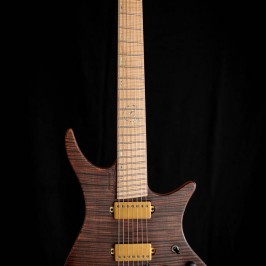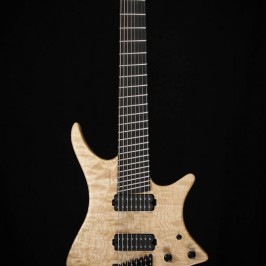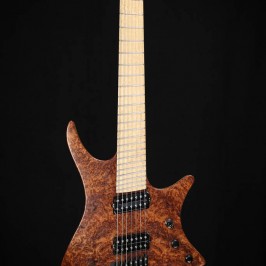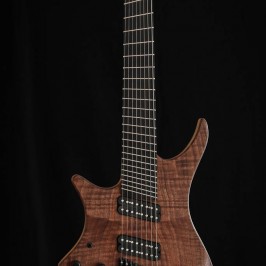
Content on this site is licensed under Creative Commons Attribution Non Commercial Share and Share Alike license as long as you follow these guidelines.
Learn More
Purchase the .strandberg* Ergonomic Guitar System (EGS) headless hardware, EndurNeck licenses etc.
Learn More
The entire design process and evolution from 2007 has been documented. Here, you can find DIY instructions and progress pictures of most guitars completed.
Learn MoreAl Mu'min - the HAARP Machine
It is with a heavy heart that I announce that I have chosen to suspend the sales of hardware and EndurNeck™ licenses as of today 27 September 2015. This is NOT for protectionistic reasons, or even because of abuse, but simply because I am in a phase of building the company that I need to prioritize everything that I do. Strandberg Guitars was founded on a platform of openness and sharing, which hasn’t changed one bit. But, I will any day rather do a few things well than many things poorly, and I simply don’t have the time to support those of you that have questions about the hardware or licenses at the moment, or even to pack things up for shipping. Once a few more milestones have been cleared, and I have the staff and process to manage these things in a good way, sales will open up again. I would ask for your kind understanding, and also ask that you don’t e-mail and ask when they will be available again, as responding to those kinds of questions is the exact reason we have suspended the sales. If you have already purchased an EndurNeck™ license and/or information kit, I would kindly ask that you refrain from using it to build more necks until the sales resume, or share the information kit with others. Each neck should be marked with the serial number label you receive with the license, and we are not able to send out labels at this time. Thanks for your understanding and patience!...
Learn MoreThis post is a re-print of our newsletter sent out on 29th of May, 2015. It is with a great deal of excitement but a tinge of sadness that we announce that the .strandberg* Custom Shop is moving back to its roots in Sweden. Co-locating the Custom Shop with the Made to Measure manufacturing will allow us to leverage the economy of scale in both lines of production, and deliver better guitars faster than otherwise. We will also be adding some new options to the Custom Shop guitars in the coming weeks, such as choice of humbucker or soapbar route, control layout and choice of switch type, thereby decreasing the gap between Custom Shop and Made to Measure. The Washburn Custom Shop (operated by US Music) has been an amazing partner the past few years. Beyond just building our guitars, they have provided technical support to customers, product photography, as well as shipping services. The competence that resides within those four walls in Buffalo Grove, IL, will not be easily replaced and will be sorely missed. We would have loved to continue our relationship with them, but sadly they have decided to cease production due to economic factors. The intent is for the move to be completely transparent to customers. Since the Made to Measure shop knows these guitars intimately, there is no training at all involved. We have already secured new shop space and look forward to showing it to you soon. The web shop will continue to be priced in USD for strandbergguitars.com and EUR including VAT for strandbergguitars.eu. The prices for the .com shop will be...
Learn MorePeople have been asking for a fanned fret tremolo for years, and I have spent many cycles designing the ultimate modular tremolo, which will scale just like the regular hardware and can be used for any number of strings, and scale length relationship, etc. The really difficult part was cracking how to make the tremolo modular, but still possible to affect all the strings at once with a single arm. As amazing as the Tremologic™ invention is, most people expect a tremolo to behave in the “normal” way. We do need a little more time to figure out if it actually works though. The scores of people who have asked if they can put a tremolo on the regular Boden guitars have been brushed away with “No, a conventional tremolo with a single fulcrum point doesn’t work with fanned frets”, but I never actually analyzed it. The reason for assuming it would not work well is that the lower strings end up far away from the pivot point and are affected with more of an up-down motion than a back-forth motion that causes the tremolo effect. However, as it turns out, the effect is quite similar. First, here is the regular tremolo, in its balance position: And rotated 5 degrees: And the fanned fret version, with the first string pushed forward and the sixth pulled back: And rotated 5 degrees: As you can see, the movement in the string’s direction is roughly the same for both! So, I went to work and “hacked” a tremolo and my personal Boden OS 6 demo guitar. And the results are...
Learn MoreThe Lace Alumitone™ pickups, like the X-Bar, which we use extensively, is based on a non-conventional technology (which we will not go into here) that provides noise- and hum-free high definition full range sound in a beautiful and lightweight package. They don’t consist of two separate hum canceling bobbins like a humbucker, so when wiring them, there are less options. The option that they do provide is a “split” which is more similar to a coil tap, but it is again not a conventional coil tap because it does its magic without a dramatic loss in signal. But it changes the voicing of the pickup in a very nice way. Connecting one of these pickups, using the split option, can be confusing because rather than shorting out one of the bobbins or part of the coil, you actually choose a different ground but leave the hot (signal) wire alone. For a humbucker sound, connect the white/black cable to ground and leave the white cable disconnected and for the single coil sound, connect the white cable to ground and leave the white/black disconnected. (Leaving the white cable completely disconnected is important – resist the temptation to connect it to the other white cable, or shorting it to ground.) Here is a diagram on how to use a 4-pole 5-way switch (aka “Superswitch”) to obtain split sounds in position 2 and 4. Enjoy! (Note that the white/black cable on the pickup is depicted as black in the diagram. The very nice and free software DIYLC was used to create the...
Learn MoreZero frets have an awesome property: they allow open strings to sound as close to fretted strings as possible. In addition, there is no guess work in cutting nut slots, etc. All in all, they just make perfect sense. When it comes to .strandberg* guitars, the 0-fret serves a secondary purpose as well: namely that it provides string ground for the remaining strings after only the high E has been grounded. One drawback, however, is that it can wear out over time since the string is always resting against it. The more the string can move across it during play, the quicker it will wear out. The original design intent for the EGS hardware was to simply fasten the strings in the string locks and let them pass over the 0-fret, but with fanned fret deployments, the string locks don’t line up at the correct spacing. So to provide this, and also to minimize the possible movement, a correctly cut “nut”, or “spacer”, is needed. Now that we have guitars in serial production, it is no longer feasible to hand-cut nuts, as we have always done. We need an outside vendor to produce them in quantities and at a decent price. But the vendors out there are not used to cutting nuts for fanned fret guitars, and it is indeed tricky to do with conventional techniques. The obvious solution is to injection mould nuts. But this requires creating a mould, and unless you make nuts in quantities of 1,000+, the nuts become very expensive. And if a re-design is called for, facing a new mould investment can be a...
Learn MoreOver here at the Strandberg headquarters, Sunday is turning into play day. Leaving the day job turned weekdays into work days, and as all of you on the waiting list and build schedule know, there is a lot going on. But it’s great to be able to free up a little time for new development! I have been planning a bass since 2012. The design was done, and the prototype hardware was manufactured at that time. However, things do seem to stack up and get in the way. I had 9 pcs of hardware made, and in a weak moment, I sold 5 pcs to the amazing bass builder Alex Watson. At this time, I really wish I hadn’t, because the prospect of making the first .strandberg* bass a 4-string hurts. But it might be a blessing in disguise, because if it doesn’t work, at least I know it’s not because it has too many strings. More information will follow shortly, but for now, I’m facing a lot of design decisions. The prototype will share the same materials as the first Varberg prototype guitar: Macassar Ebony top, Swamp Ash core and Mahogany back, with a Rosewood neck and Ebony fretboard. The pickups I purchased back then are Lace Alumitone Jazz bass and Precision bass pickups. I’m not really keen on changing those overall specs, but will gladly take input now on scale lengths and string spacings, etc. The sketch you see has 33″ – 34.5″ scale length and 19 mm spacing at the bridge, and roughly 9.5 mm at the nut (Jazz bass...
Learn More
Apr 15, 2014

Apr 12, 2014

Apr 12, 2014

Apr 12, 2014

Apr 12, 2014

Mar 23, 2014